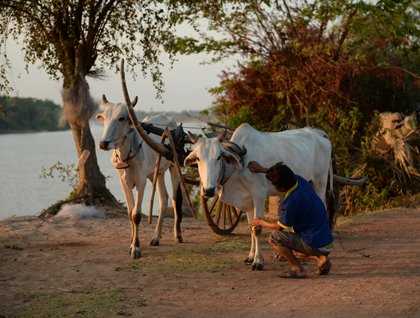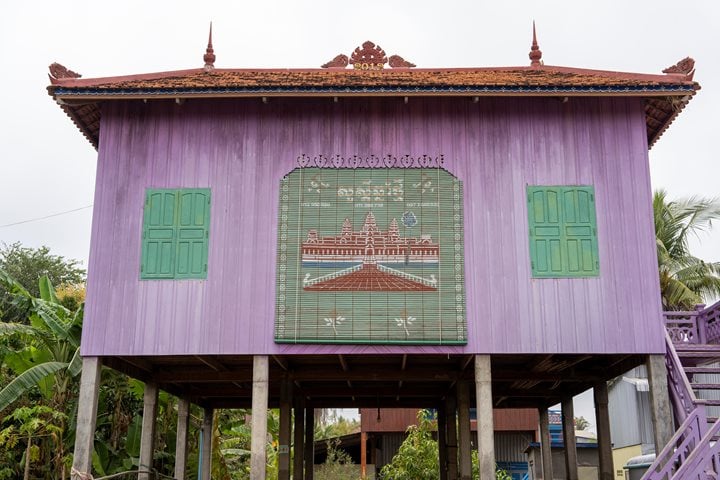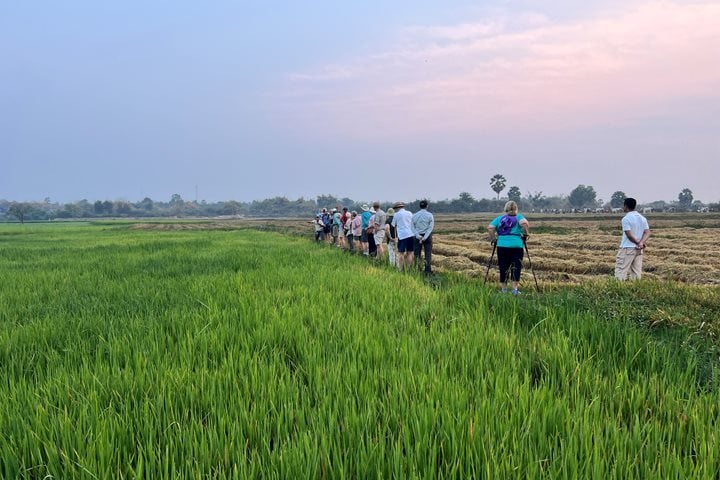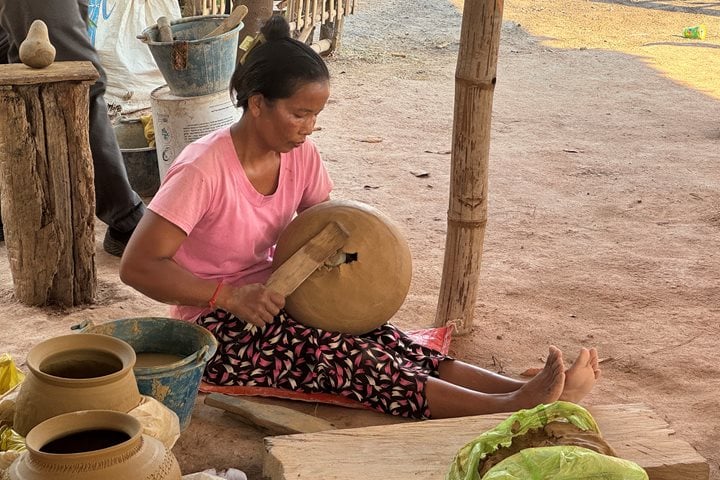We disembark Jahan and board traditional Khmer oxcarts to travel a little over a mile to the village of Kampong Tralach on the Tonle Sap River. We are thus experiencing yet another rather bizarre form of transportation, on vehicles that normally transport rice or other agricultural items. We go through verdant paddy fields, irrigated from the river in this dry season, and are treated to the sight of a plantation of lotus flowers, just beginning to yield their delicious seeds—the lotus, of course, is a Buddhist symbol of peace and plenty as we approach the New Year. Clouds threaten an early monsoon shower, but the rain holds off.
Lindblad Expeditions-National Geographic is training English teachers for evening classes at the local elementary school, which is embarking also on the construction of a new library to be mainly stocked with English materials for these enthusiastic young scholars. The children greet us warmly and our guests mingle freely in the classrooms as they sing us two or three songs, in both English and Khmer.
In the afternoon, we travel by local boats to the City of Kampong Chhnang, a large provincial capital at the south end of the Tonle Sap Lake. Kampong Chhnang is mainly known for being the pottery centre of Cambodia, and we have an opportunity to see how terracotta pots are manufactured as a cottage industry in a nearby village. We meet the local village chief who, at the age of 62, is still scrambling nimbly up some 30 sugar palm trees a day to retrieve the valuable nectar that can be turned into sugar, beer, and a potent palm whisky. En route back to Jahan, one of our local boats provides us with an unexpected adventure when it develops a serious steering problem just short of its destination, thus requiring its sister vessel to come to our rescue. As night falls, we cruise down the river to anchor overnight near the Cambodian capital of Phnom Penh.









